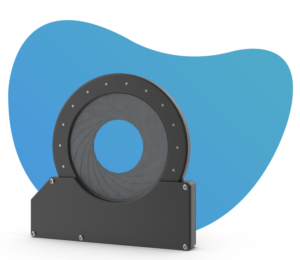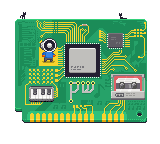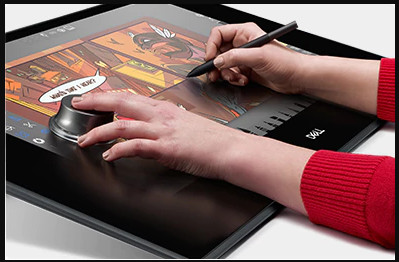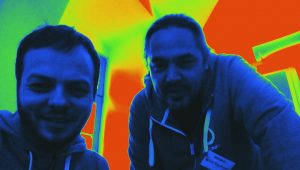There was an article on Open for Everyone today about Nobara, a Fedora-based distribution optimized for gaming. So I have no beef with Tomas Crider or any other creator/maintainer of a distribution targeting a specific use case. In fact they are usually trying to solve or work around real problems and make things easier for people. That said I have for years felt that the need for these things is a failing in itself and it has been a goal for me in the context of Fedora Workstation to figure out what we can do to remove the need for ‘usecase distros’. So I thought it would be of interest if I talk a bit about how I been viewing these things and the concrete efforts we taken to reduce the need for usecase oriented distributions. It is worth noting that the usecase distributions have of course proven useful for this too, in the sense that they to some degree also function as a very detailed ‘bug report’ for why the general case OS is not enough.
Before I start, you might say, but isn’t Fedora Workstation as usecase OS too? You often talk about having a developer focus? Yes, developers are something we care deeply about, but for instance that doesn’t mean we pre-install 50 IDEs in Fedora Workstation. Fedora Workstation should be a great general purpose OS out of the box and then we should have tools like GNOME Software and Toolbx available to let you quickly and easily tweak it into your ideal development system. But at the same time by being a general purpose OS at heart, it should be equally easy to install Steam and Lutris to start gaming or install Carla and Ardour to start doing audio production. Or install OBS Studio to do video streaming.
Looking back over the years one of the first conclusions I drew from looking at all the usecase distributions out there was that they often where mostly the standard distro, but with a carefully procured list of pre-installed software, for instance the old Fedora game spin was exactly that, a copy of Fedora with a lot of games pre-installed. So why was this valuable to people? For those of us who have been around for a while we remember that the average linux ‘app store’ was a very basic GUI which listed available software by name (usually quite cryptic names) and at best with a small icon. There was almost no other metadata available and search functionality was limited at best. So finding software was not simple, at it was usually more of a ‘search the internet and if you find something interesting see if its packaged for your distro’. So the usecase distros who focused on having procured pre-installed software, be that games, or pro-audio software or graphics tools ot whatever was their focus was basically responding to the fact that finding software was non-trivial and a lot of people maybe missed out on software that could be useful to them since it they simply never learned about its existence.
So when we kicked of the creation of GNOME Software one of the big focuses early on was to create a system for providing good metadata and displaying that metadata in a useful manner. So as an end user the most obvious change was of course the more rich UI of GNOME Software, but maybe just as important was the creation of AppStream, which was a specification for how applications to ship with metadata to allow GNOME Software and others to display much more in-depth information about the application and provide screenshots and so on.
So I do believe that between working on a better ‘App Store’ story for linux between the work on GNOME Software as the actual UI, but also by working with many stakeholders in the Linux ecosystem to define metadata standards like AppStream we made software a lot more discoverable on Linux and thus reduced the need for pre-loading significantly. This work also provided an important baseline for things like Flathub to thrive, as it then had a clear way to provide metadata about the applications it hosts.
We do continue to polish that user experience on an ongoing basis, but I do feel we reduced the need to pre-load a ton of software very significantly already with this.
Of course another aspect of this is application availability, which is why we worked to ensure things like Steam is available in GNOME Software on Fedora Workstation, and which we have now expanded on by starting to include more and more software listings from Flathub. These things makes it easy for our users to find the software they want, but at the same time we are still staying true to our mission of only shipping free software by default in Fedora.
The second major reason for usecase distributions have been that the generic version of the OS didn’t really have the right settings or setup to handle an important usecase. I think pro-audio is the best example of this where usecase distros like Fedora Jam or Ubuntu Studio popped up. The pre-install a lot of relevant software was definitely part of their DNA too, but there was also other issues involved, like the need for a special audio setup with JACK and often also kernel real-time patches applied. When we decided to include Pro-audio support in PipeWire resolving these issues was a big part of it. I strongly believe that we should be able to provide a simple and good out-of-the box experience for musicians and audio engineers on Linux without needing the OS to be specifically configured for the task. The strong and positive response we gotten from the Pro-audio community for PipeWire I believe points to that we are moving in the right direction there. Not claiming things are 100% yet, but we feel very confident that we will get there with PipeWire and make the Pro-Audio folks full fledged members of the Fedora WS community. Interestingly we also spent quite a bit of time trying to ensure the pro-audio tools in Fedora has proper AppStream metadata so that they would appear in GNOME Software as part of this. One area there where we are still looking at is the real time kernel stuff, our current take is that we do believe the remaining unmerged patches are not strictly needed anymore, as most of the important stuff has already been merged, but we are monitoring it as we keep developing and benchmarking PipeWire for the Pro-Audio usecase.
Another reason that I often saw that drove the creation of a usecase distribution is special hardware support, and not necessarily that special hardware, the NVidia driver for instance has triggered a lot of these attempts. The NVidia driver is challenging on a lot of levels and has been something we have been constantly working on. There was technical issues for instance, like the NVidia driver and Mesa fighting over who owned the OpenGL.so implementation, which we fixed by the introduction glvnd a few years ago. But for a distro like Fedora that also cares deeply about free and open source software it also provided us with a lot of philosophical challenges. We had to answer the question of how could we on one side make sure our users had easy access to the driver without abandoning our principle around Fedora only shipping free software of out the box? I think we found a good compromise today where the NVidia driver is available in Fedora Workstation for easy install through GNOME Software, but at the same time default to Nouveau of the box. That said this is a part of the story where we are still hard at work to improve things further and while I am not at liberty to mention any details I think I can at least mention that we are meeting with our engineering counterparts at NVidia on almost a weekly basis to discuss how to improve things, not just for graphics, but around compute and other shared areas of interest. The most recent public result of that collaboration was of course the XWayland support in recent NVidia drivers, but I promise you that this is something we keep focusing on and I expect that we will be able to share more cool news and important progress over the course of the year, both for users of the NVidia binary driver and for users of Nouveau.
What are we still looking at in terms of addressing issues like this? Well one thing we are talking about is if there is value/need for a facility to install specific software based on hardware or software. For instance if we detect a high end gaming mouse connected to your system should we install Piper/ratbag or at least make GNOME Software suggest it? And if we detect that you installed Lutris and Steam are there other tools we should recommend you install, like the gamemode GNOME Shell extenion? It is a somewhat hard question to answer, which is why we are still pondering it, on one side it seems like a nice addition, but such connections would mean that we need to have a big database we constantly maintain which isn’t trivial and also having something running on your system to lets say check for those high end mice do add a little overhead that might be a waste for many users.
Another area that we are looking at is the issue of codecs. We did a big effort a couple of years ago and got AC3, mp3, AAC and mpeg2 video cleared for inclusion, and also got the OpenH264 implementation from Cisco made available. That solved a lot of issues, but today with so many more getting into media creation I believe we need to take another stab at it and for instance try to get reliable hardware accelerated encoding and decoding on video. I am not ready to announce anything, but we got a few ideas and leads we are looking at for how to move the needle there in a significant way.
So to summarize, I am not criticizing anyone for putting together what I call usecase distros, but at the same time I really want to get to a point where they are rarely needed, because we should be able to cater to most needs within the context of a general purpose Linux operating system. That said I do appreciate the effort of these distro makers both in terms of trying to help users have a better experience on linux and in indirectly helping us showcase both potential solutions or highlight the major pain points that still needs addressing in a general purpose Linux desktop operating system.














